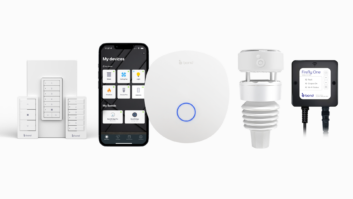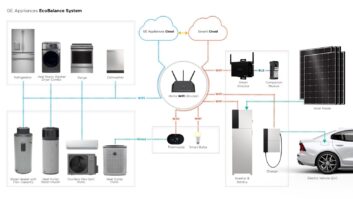Washington, D.C. – The Federal Communications Commission
(FCC) wants to impose more stringent regulations on fixed and mobile
cellular-signal boosters to prevent interference with cellular carriers’
networks.
The commission proposed new technical standards for
mobile (in-vehicle) and fixed (in-home and in-building) signal boosters and
wants to impose a series of obligations on users.
In proposing the new regulations, the FCC also asked the
industry for suggestions on how it could refine them.
CTIA-The Wireless Association and carriers had sought an
outright ban on the sale or use of
signal boosters without carrier consent, but the FCC said it came out
against a ban because well-designed boosters will benefit consumers “by improving wireless coverage in rural,
indoor, and other hard-to-serve locations where wireless coverage may be
deficient.”
The commission
noted, however, that “malfunctioning, poorly designed, or improperly
installed signal boosters… may harm consumers by blocking calls, including
E-911 and other emergency networks.” Verizon Wireless, the FCC noted, has
complained that signal-booster interference “has ranged from degrading a single
digital channel on a single cell sector, to degrading multiple channels on
multiple cell sites, leading to a reduction in the coverage area of a cell
sector, to shutting down channels, sectors, or cell sites entirely.”
AT&T disclosed an incident in which a mobile signal
booster on a yacht caused substantial interference to six AT&T towers in
Florida for 21 hours, causing 2,795 dropped calls and 81,000 “blocked or
impaired calls” because the signal booster came too close to the cell towers,
the FCC continued. AT&T also complained that signal-booster interference
increases the percentage of dropped calls, reduces base station coverage, and
reduces the battery life of cellphones used by other customers.
Public-safety agencies have also complained that the
boosters interfered with public-safety radio networks, the FCC said. In some cases,
a cell booster might give an inaccurate GPS location to emergency personnel if
the user is dialing 911, the FCC noted.
For its part, Wi-Ex, a supplier of boosters under the
zBoost brand, said it was happy with the FCC’s plan. “With hundreds of thousands
of boosters already helping municipal, state and federal governments, military
installations, security agencies, businesses, healthcare facilities and most
importantly consumers, today’s NPRM [notice of proposed rulemaking] is a win
for consumers,” said Wi-Ex CEO Lloyd Meese. “We recognized from the beginning
that oscillation could be an issue and developed patented technology as a
solution to the problem.”
CTIA-The Wireless Association withheld comment on the
proposals. “While we have yet to read the [proposed rules],” CTIA said on
Wednesday, “We remain concerned that poorly manufactured or improperly
installed boosters can do much more harm than good for both consumers and
public safety officials.”
To prevent such interferences, the FCC proposed multiple
technical standards, such as requiring boosters to:
-
meet applicable
technical specifications required
of cellular handsets, such as specified power levels and out-of-band emissions
limits.
-
self-monitor their operation to ensure compliance
with FCC technical rules and shut off automatically within 10 seconds or less
if they are not operating as required.
-
detect feedback or oscillation (between the booster’s
antenna and the cellphone’s antenna) and deactivate their transmitter within 10
seconds of detection.
Mobile signal boosters would also have to power down or
shut down as they approach the base station with which it is communicating,
thus “mitigating excess noise to base stations from signal boosters that are
operating but not needed.”
The commission also asked for advice on how to prevent a
mobile booster from interfering with a base station with which it is not
communicating. It asked, for example, whether to permit only carrier-specific
signal boosters for mobile applications or perhaps require that mobile boosters
be tethered to the phone to ensure amplification of only the desired signal.
The FCC also wants to impose obligations on users.
Users, for example, will have to:
-
register a mobile or fixed booster to help carriers
track down boosters that might be causing interference.
-
stop using a mobile booster if notified by the FCC or
a carrier of interference.
-
turn on a fixed booster only after getting local
carriers to okay the booster’s channel selection and power level.
Marketers would be required to print these user
obligations on marketing materials, packaging, instruction manuals and on the
boosters themselves.
As for existing boosters now in use but not compliant
with the proposed regulations, the FCC asked whether those boosters should be
phased out or certain models grandfathered in.
Within six months of the rules’ effective date, all
boosters marketed in the U.S. would have to comply with the rules. Within 30
days of adoption, any new booster submitted to the FCC for approval would have
to comply.
Before the FCC vote, booster maker Wilson Electronics
was hopeful that the commission would allow the use of cell signal boosters but
subject them to increased regulations. Said COO Joe Banos before the vote,
“We are hopeful that when a preliminary ruling comes down, the FCC decides
to allow the use of cell signal boosters subject to increased regulations
requiring booster manufacturers to meet industry standards specifications for
cell phones in addition to having designed in technologies such as cell site
overload/noise floor level protection and feedback oscillation sensing with auto-shutdown.”
These requirements, when to the FCC equipment
certification process “would ensure that all manufacturer’s booster products
work transparently and don’t interfere with cell sites,” he said.













